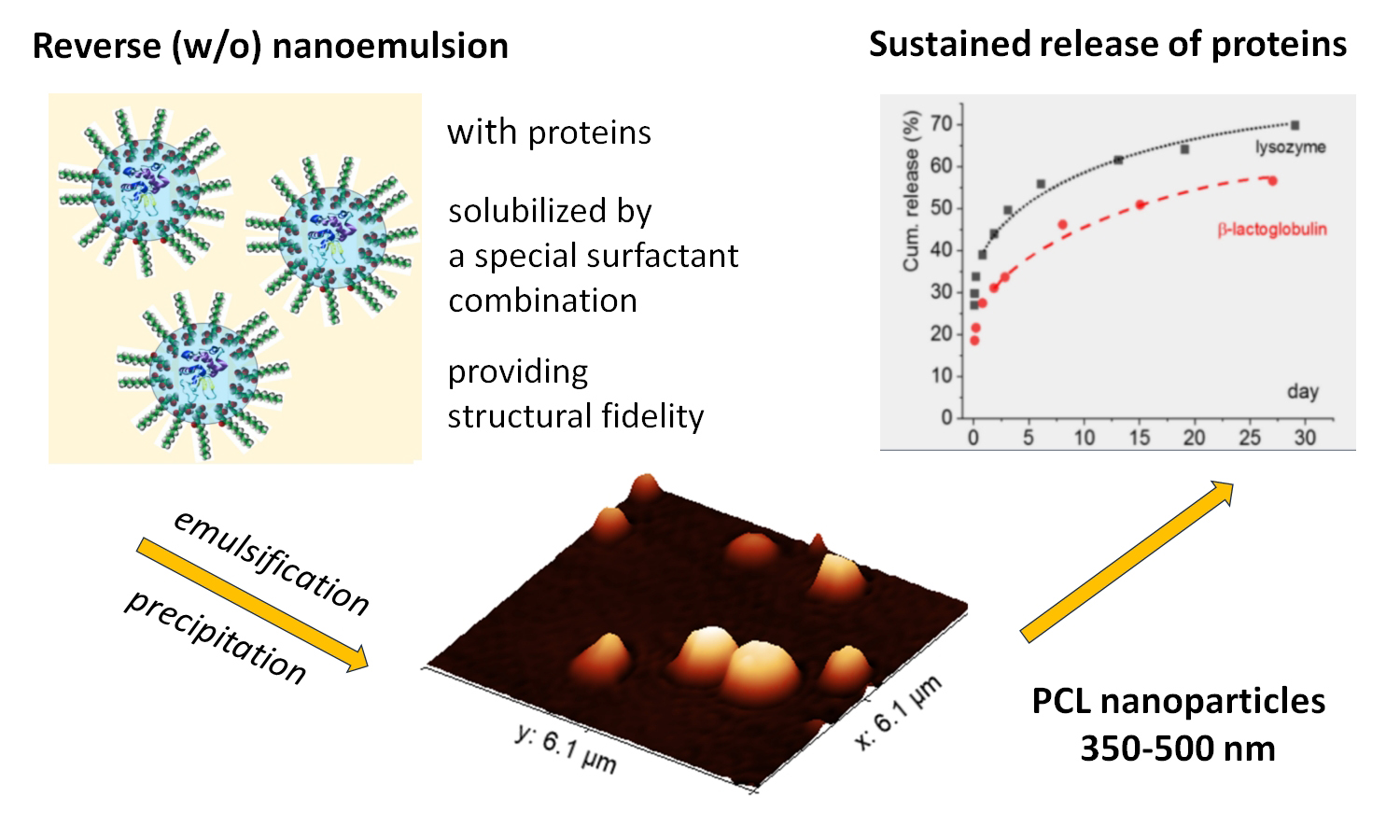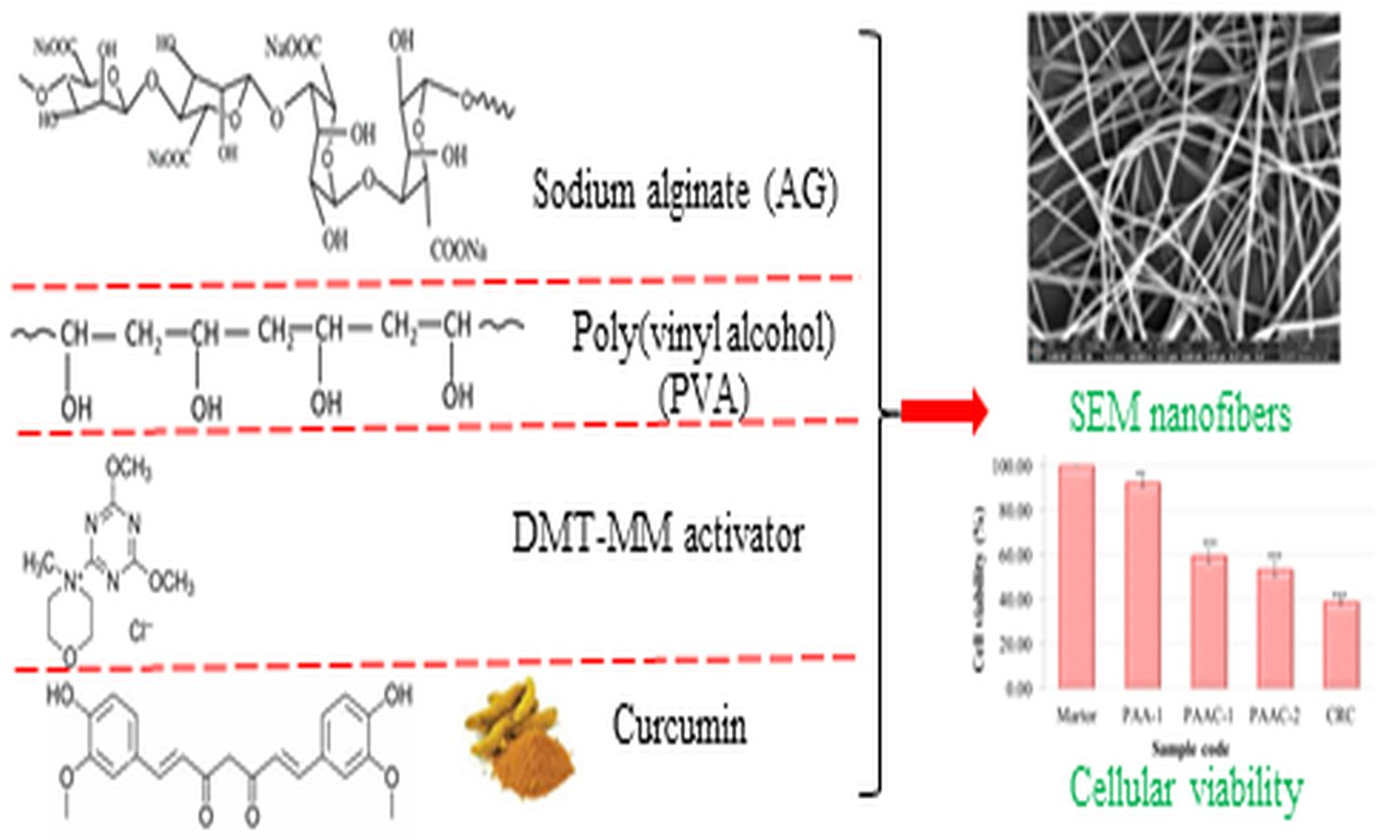Effective nanoparticulate-type encapsulation delivery system for hydrophilic proteins and peptides
Flavio Massignan, Gergő Gyulai , Kata Horváti, Szilvia Bősze, Éva Kiss
Vol. 18., No.1., Pages 72-87, 2024
DOI: 10.3144/expresspolymlett.2024.6
DOI: 10.3144/expresspolymlett.2024.6
GRAPHICAL ABSTRACT

ABSTRACT
The elaboration of potent delivery systems for peptides/proteins is still a challenge but is increasingly needed in advanced therapy. In the present research, we have developed a nanoencapsulation system for peptides/proteins, which is suitable for the delivery of hydrophilic bioactive compounds. The preparation method combines the advantageous properties of reverse nanoemulsion and nanoprecipitation, resulting in the formation of nanoparticles in the size range of 350–500 nm. The polymeric coating composed of polycaprolactone allows chemical functionalization and protection while the inner microenvironment (containing 1-decanoyl-rac-glycerol and N,N-dimethyldodecylamine N-oxide surfactants) provides aqueous surrounding for the active with structural fidelity. Hen egg white lysozyme and β-lactoglobulin were successfully encapsulated, achieving protein contents of 10–60 μg/mg and encapsulation efficiencies ranging from 5–50% depending on the protein type and loading concentration. In vitro release measurement showed a biphasic sustained release profile of both proteins in the time range of one month. In vitro cytotoxicity investigation of protein-loaded nanoparticles exhibited good cell viability (above 95% at the highest treatment concentration of 0.3 mg/ml). The encapsulated membrane-active peptides have shown improved bioactivity.
RELATED ARTICLES
Delia Mihaela Raţă, Anca Niculina Cadinoiu, Luiza Mădălina Grădinaru, Paul Codrin Fuioaga, Gabriela Vochita, Christelle Delaite, Leonard Ionuţ Atanase
Vol. 19., No.3., Pages 233-245, 2025
DOI: 10.3144/expresspolymlett.2025.18
Vol. 19., No.3., Pages 233-245, 2025
DOI: 10.3144/expresspolymlett.2025.18

Curcumin (CRC) is a natural active principle with important anti-inflammatory, antioxidant, antibacterial, and antitumor properties but has some limitations, such as poor bioavailability, low water solubility, and rapid metabolism. To preserve CRC’s benefits and eliminate its limitations, novel CRC-loaded core-shell electrospun nanofibers were designed. The nanofibers were prepared by co-axial electrospinning method using poly(vinyl alcohol)/CRC as core and poly(vinyl alcohol)/sodium alginate as shell. Polymer coating protects the CRC, increasing its stability. The swelling degree of CRCloaded nanofibers at pH 5.4 was around 326% higher than at pH 7.4 (297%) due to the repulsions of the anion-anion COO–groups. The release efficiency of CRC at pH 7.4 was 81%, while at pH 5.4 was about 96%. In the first 6 h, there was a slower release of CRC from the nanofibers in both acidic and slightly alkaline environments. Nanofibers showed good hemocompatibility, the values being between 2.36–3.22% after the first 90 min of contact, and after 180 min of treatment, the degree of erythrocyte lysis was between 3.78 and 4.93%. Cell viability assay on V79-4 Chinese hamster fibroblasts demonstrated that treatment with free CRC led to a value of 39% whereas for CRC-loaded nanofibers, the cell viability value increased to 59.66%. The results of the present study indicated that CRC-loaded electrospun nanofibers can have great potential for biomedical applications.



